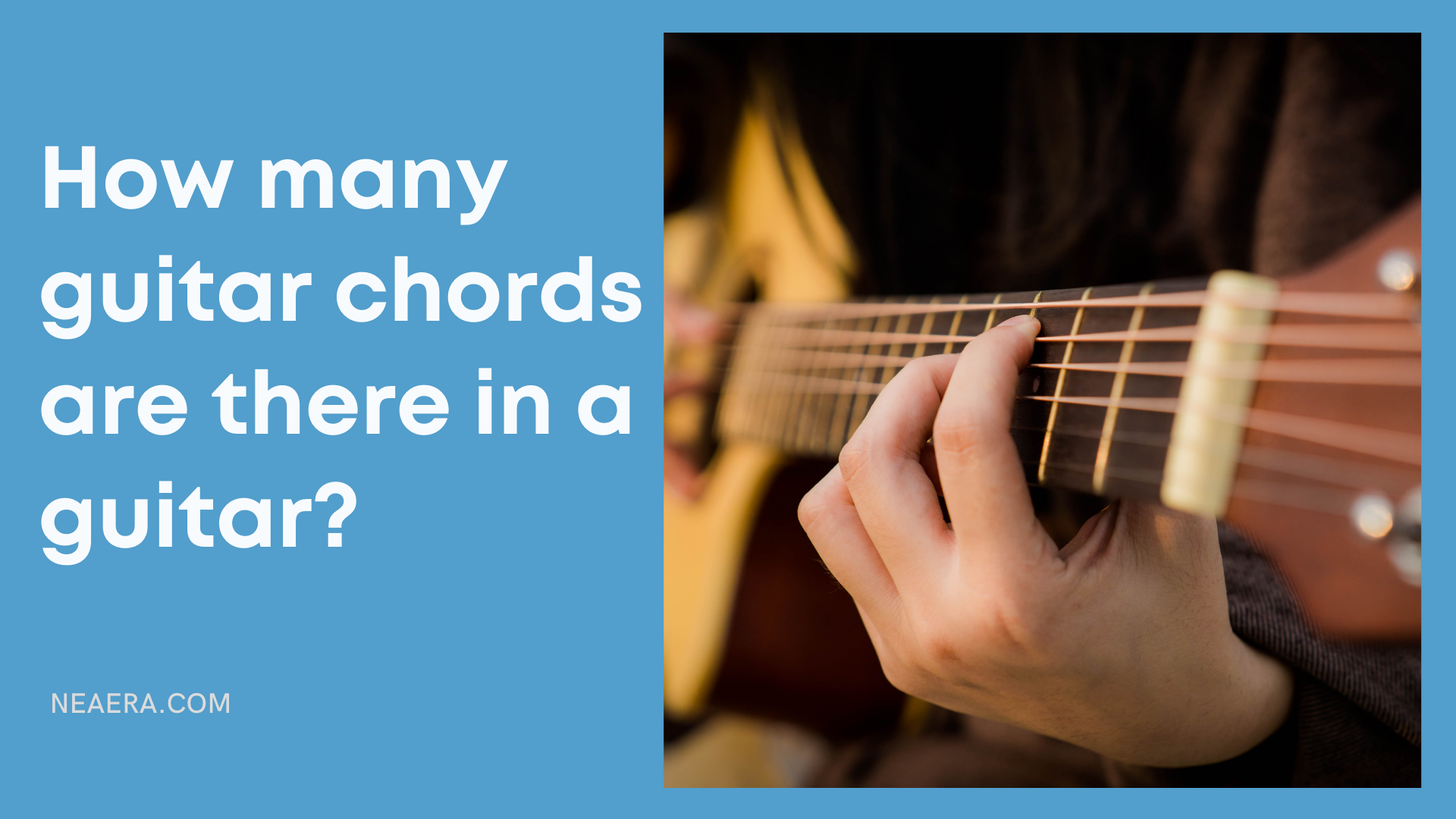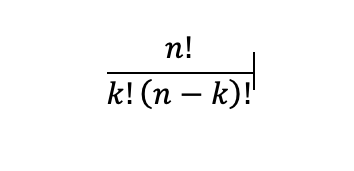Do you want to learn to play more guitar chords to improve your skills and wondered how many guitar there are?
At first glance, it seems there’s an infinite number of guitar chords, but that’s inaccurate. Although the number of chords is finite, there’s no exact answer. There are approximately 4,083 guitar chords. But the exact number varies depending on the mathematical equation used to calculate it.
A guitar chord is simply a combination of 2 or more notes played simultaneously so that’s why there could potentially be so many. Let’s look at that in more detail.

Practically, there are thousands of guitar chords because there are thousands of possible note combinations. The resulting number depends on the mathematical formula used to calculate the number of chords.
But beginners should learn at least 10 types of chords to be able to play most musical genres.
Each cord type has 12 different chords for the total number of different notes in music. As a result, there are thousands of chords and note combinations.
Most common guitar chords
The chords you’ll come across most often when playing music are:
I am mentioning the major chords because for the minors, you make minor adjustments. So if you can play the major chords, you can also learn the minors quickly.
There are 4 very important chords every guitarist must know before learning to play complex pieces:
- Major
- Minor
- Augmented
- Diminished
Check out YouTube user Guitareo’s video on 20 chords every guitar player should know:
But first, what is a chord?
A chord is generally 3 or more unique notes that are played together. So to simplify, a chord is a combination of notes that are of different pitches.
When you start learning guitar, you’ll begin by learning the most basic chords or combined notes.
The chromatic scale contains 12 notes. Since 1 chord is made of 3 or more notes, a chord can have between 3 to 12 notes.
The basic 3-note chords (triads) are the easiest to play. As you might’ve guessed, the more notes, the harder the chords are to play.
You’re probably wondering about how to learn chords.
There’s no easy answer, but a quick way to learn guitar chords is through a diagram that shows you where to place your finger and where the notes are located on the fretboard.
The 7 guitar chords beginners should learn first
If you want to learn guitar, you should learn some of the basic chords first and then advance towards more complex ones.
Here are the ones you need to know:
On a 6-string guitar, you can only play 6 notes at one time, and as a result, only 6 tones at once. Of course, there are so many chords you have to learn, but I just listed the ones that players tend to learn in the beginning.
Also check out my review of the best guitars for beginners: discover 13 affordable electrics and acoustics
Mathematical formula: how to calculate how many chords you can play
There are many ways to calculate how many guitar chords there are. I’m sharing 2 numbers that people know about.
First, some mathematicians have come up with the basic number of chords you can play and need: 2,341.
Is this number really useful? No, but it just goes to show how many possibilities there are!
Then, according to the special chord calculation formula, you can play 4,083 unique chords. This formula is not concerned with voicing; it calculates possible note combinations to create chords.
Here’s the factorial formula:

n = the notes to choose from (there are 12)
k = the subset or number of notes in the chord
! = means this is a factorial formula
A factorial is when you have to multiply an integer by every whole number that’s less than that integer. It sounds complex, so if you’re not a math wizz, it’s best just to look up chord combinations you’re interested in.
The problem with such formulas is that they’re not very helpful. The reason is that these calculations disregard voicing and are limited to 1 octave.
Music has many octaves, and voicing is extremely important. However, it can be useful for those of you who are curious about how many possible chords there are.
The types of guitar chords
More important than the exact number of guitar chords is knowing the types of chords. Let me list some here.
Open vs. barre chords
This refers to 2 different ways of playing the same chord.
When you play an open chord, you have to have 1 string that’s played open.
On the other hand, barre chords are played by pressing all the strings of a fret with your index fingers.
Same type chords
This refers to different chords of the same type, like major or minor chords. A minor and E minor aren’t the same chords, but they’re both minors.
Power chords
These refer to chords that are composed of dyads (2 notes), so technically, they’re not 3-note chords.
When playing, these power chords work just like other chords. So technicalities aside, power chords are included as a type of chord.
Equivalents
Like C6 and Amin7, some chords are actually made of the same notes; therefore, they seem like they’re the same.
Although they can be used interchangeably, the chords have a different role in musical harmony.
Triads
These chords are made of 3 notes that are stacked in intervals of 3rds.
The 4 main types of triads are major, minor, diminished, and augmented.
7th chords
To form a 7th chord, a 7th interval from the root is added to an existing triad.
The most common 7th chords are the following 3: major 7th (Cmaj7), minor 7th (Cmin7), and dominant 7th (C7).
Basically, it’s a triad with an added note that’s a 7th higher than the triad’s root.
Extended chords
These cords are commonly used when playing jazz, so they’re also known as jazz chords.
To make an extended chord, more 3rds are stacked above the 7th.
Suspended chords
This occurs when a 2nd interval is stacked instead of a 3rd. Therefore, the 3rd is replaced by the 2nd (sus2) or the 4th (sus4) of the scale.
Add chords
Compared to a suspended chord, an add chord means that a new note is added, and the 3rd isn’t removed in this case.
Add 2 and add 9 are the most popular add chords.
Slash chords
A slash chord is also called a compound chord.
It refers to a chord that has a slash symbol and the letter of the bass note, which is placed after the root note letter. This symbolizes the bass note or inversion.
The root note is the chord’s lowest played note.
Altered chords
These chords are mostly found in jazz music.
They refer to 7th or extended chords that have either a raised or lowered 5th or 9th note. It can also be both.
Play guitar chords to your content
Beginner guitar players feel overwhelmed when starting out because there are so many chords.
Sure, it can seem daunting to learn so many. But once you get the hang of playing, you’ll gain more confidence, and the harmonies will get better!
The key takeaway is that you should focus on the most popular chords and master them. You should worry less about the thousands of other chords.
Also read: 5 tips you need when buying a used guitar
I'm Joost Nusselder, the founder of Neaera and a content marketer, dad, and love trying out new equipment with guitar at the heart of my passion, and together with my team, I've been creating in-depth blog articles since 2020 to help loyal readers with recording and guitar tips.

